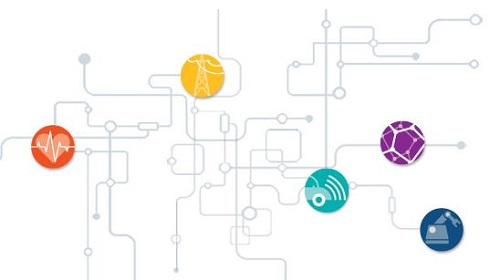As the era of embedded intelligence spreads before us, analog integration returns to vogue. No longer merely a specialty of bearded men, analog integration pushes the boundaries of both infrastructure and industry to maintain pace with tomorrow’s always-connected, on-demand world.

Advanced analog sensing helps the Internet-of-Things take root across multiple industries.
What is analog integration?
Fueled by the advent of wireless communication making its way into the bowels of absolutely everything like some transient digital ooze, computational processing has spread throughout the physical network, embedding intelligence in previously untouched locations. The role of analog integration has shifted from merely including analog functions on digital chips, to data farming on an exponential level. Sound, light, vibration, and voltage are all parameters needed to keep the modern robust network connected. The world of computer processing is interfacing with the physical world more than ever before, challenging information networks to devise solutions rooted in analog systems, thereby creating the information-gathering tools needed to stay connected.
A symbiotic relationship with digital
The increasing complexity of information networks and consumer electronics signifies an increase in the networks’ need to interface with the physical world, advocating the symbiotic link between the digital and analog modes of expression. The advance of one domain is dependent on that of the other. As such, the integration of analog technology is helping to solve problems in manufacturing, the smart grid, automotive, healthcare, fiber infrastructure, and wireless infrastructure.
Automotive
The automotive vehicle market is shifting focus to include a wider range of electric vehicles. It’s estimated that by 2012 there will be 10 million electric vehicles on roads, forcing manufacturers to compete for innovation and affordability. Customers are demanding cleaner, lighter, and longer-lasting batteries to make their investment worthwhile. Safety features such as tire-pressure-monitoring systems, electronic stability control, and rear-facing cameras are becomingstandard. The amount of additional electronics is staggering. Vehicles are becoming as connected as smartphones.
Connected smart vehicles will be transmitting and receiving exorbitant amounts of data, requiring numerous transceivers and tuners. The challenge is maintaining speed radio links and clean, noiseless circuits, while reducing clutter. Analog technologies are providing the efficient front end to keep information flowing.
Medical
With the worldwide population aging, the estimated number of people over the age of 65 is slated to triple by 2050 according to the American Diabetes Association. Keeping healthcare costs low and chronic diseases in check requires innovation in the ultrasound market. The improvement of ultrasound equipment is vital in accurately diagnosis diseases early on; but, system designers must find a way to condense and streamline equipment weighing as much as 50 lbs. and costing up to $100,000. Simultaneously, the rise of the Internet-of-Things will add embedded home sensors with wireless connectivity to patient homes in an effort to improve long-term care.
Getting people out of hospitals will directly cut the cost of a six trillion dollar yearly expense associated with annual hospital care. Advanced Analog integration will reduce the size and cost of cutting-edge medical equipment, giving patients access tools normally not available in public, and shift healthcare from a reactive industry toward a preventative industry. Consider that the three-lead ECG monitoring patient vitals was once the size of a refrigerator, but advances in analog integration have compacted the size to be built right into computer-worn clothing.
This trend signifies a growing interconnectivity between medical devices, giving medical practitioners the greater means to precisely monitor individual patient health. So much data streaming into the cloud must be securely protected and Maxim Integrated takes the security its renown for providing to the financial market and assimilating into medical devices. The company is releasing an entire line of products combining a high-performance microcontroller, high-performance analog block, RF communications, and a trust protection unit to provide security at the device level.
Manufacturing
Smart factories, and the automated process control systems associated with them, are quickly becoming the best practices in worldwide manufacturing. Manufacturing is transitioning from centralized system control to having the actual processing directly embedded in the machine itself, thereby optimizing the assembly line and reducing bottlenecks. The supply chain is becoming “smarter” thanks to integrated analog systems harnessing much more data than ever before.
Integrated analog sensors are key sentinels in ensuring the entire system operates efficiently. They are responsible for providing real-time diagnostic data at every node in the chain. System designers must find a way to future-proof plants by adding more intelligence without increasing the size of any component.
The Industrial Ethernet, high-performance analog front ends, sensors, actuators, and all the other aspects of a connected factory rely on information technology to function. This coalition potentially opens the door to malicious hacking on multiple fronts and requires factories to use a significant amount of security measures. Physical gates and firewalls are not adequate protection. Maxim provides the same level of security as used in protecting financial markets.
Visit Maxim Integrated for an in-depth look integrated analog’s place
Advertisement
Learn more about Maxim Integrated





